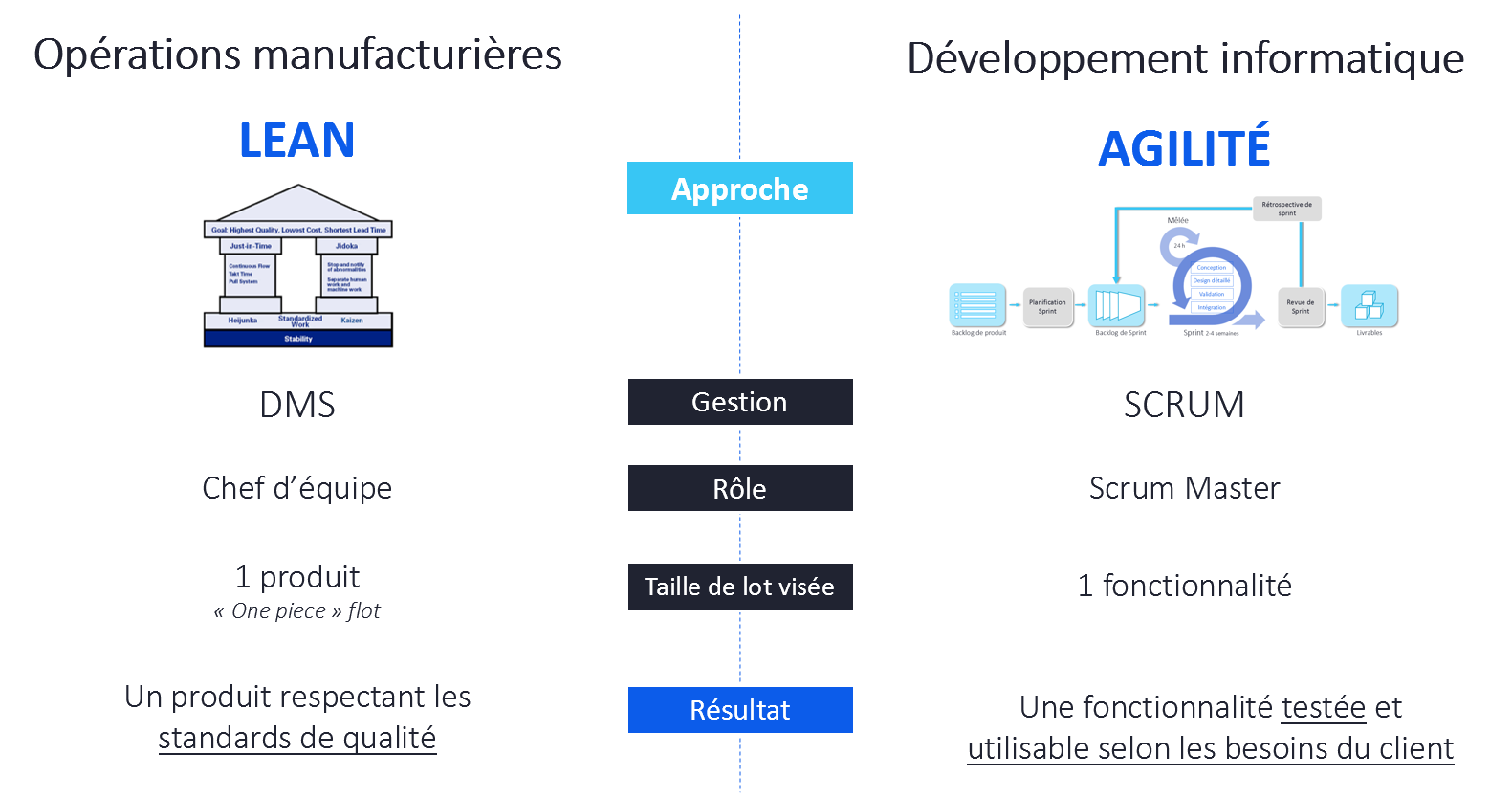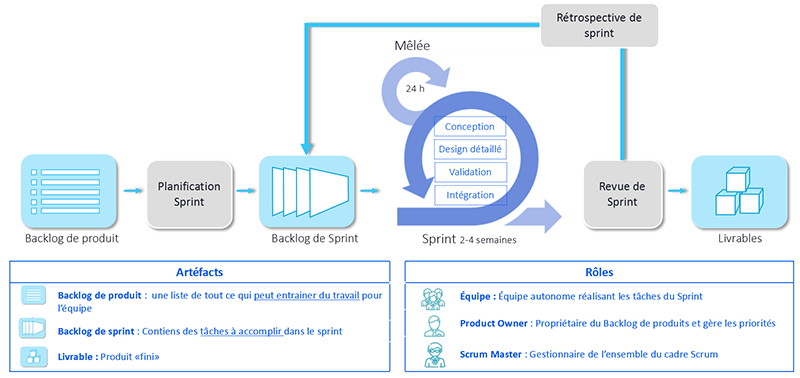Scrum In Engineering, Is It The Logical Thing To Do Next?
During the industrial era, there was chaos on production floors, then Lean and its various tools allowed the structuring of operations thus encouraging organizations to excel.
The same challenges presented themselves during the computer age, but on the development level. Development teams became capable of reaching new summits through the Agile methodology and Scrum framework.
What if it was the time for your engineering teams to improve their performance?
The Evolution of Lean Into the Agile Methodology

Increase in Complexity of Requests Made to Engineering Teams
Engineering projects are getting more and more complex. Nowadays, they integrate mechanization, electronics, automation, and ... artificial intelligence! Deliverables being expected from your teams must satisfy your client’s specific requests and be completed within shorter than ever deadlines. Combining this to a labour shortage context, within which our skilled and experienced employees are being continually solicited, causes a loss of knowledge as well as the need to continuously integrate new employees.
It is then understandable that engineering teams often feel overwhelmed and out of breath! To add insult to injury, despite all their good intentions, they are often perceived as being the bottleneck within the organization (a topic that we addressed during an earlier breakfast conference in Québec, on November 20th.)
By integrating a Scrum framework to other project management best practices applied to engineering teams, we are creating a new dynamic. Furthermore, we rally other team members toward a common goal: delivering an innovative quality product that fully satisfies the client’s needs.

Overview of the steps in Implementing a Scrum Framework
Here are what we think are the five major steps that encompass the main activities of implementing a Scrum framework in a team:
1. Defining the Roles & Responsibilities of Each Team Member
Some roles are clearly defined as part of the Agile methodology: Scrum Master, Product Owner, Development Team. It is essential to choose the right person for the job. Depending on the maturity level of your team, other roles can be added.
2. Training Your Team on New Approaches and Tools
We will never repeat it often enough: training is crucial! Involving teams throughout the process, from the initial steps of designing through to the continuous improvement will increase the team’s sense of ownership. Thus, directly contributing to the success of the Scrum framework implementation.
3. Implementing a Scrum Framework
Thoroughness is the key word!
As mentioned in the Guide, Scrum is:
- Light;
- Simple to understand;
- Hard to master.
Given these characteristics, it is all the more important to be disciplined enough to persist with implemented initiatives. Regardless of how overwhelmed or discouraged we get; and we will. Lack of time, the sentiment that gains are not being made, discouragement and frustrations are various feelings your employees may experience.
4. Selecting and Setting Up a Management Tool
It is important to research the different tools that are available to support you in the management of your operations and strategies. Then, choose and implement one that corresponds to your current needs, and future ones. Available tools can range from a Post-it, to an integrated of software such as Jira.
However, I suggest experimenting the Scrum framework for a few months, and understanding your needs, before making a final decision about the software you will be using. Trello’s free version can be a temporary solution.
5. Coaching and Doing
Learning it while doing it is much more fun and effective. As time passes by, the teams will learn how Scrum works: meeting’s agenda, various roles, use of management tools, etc. Apart from the design team, it is important to support anyone who has to deal with the collateral effects of this new management process. For example, a representative can no longer monopolize three of your assets with a simple request jotted down on a piece of paper. Furthermore, he cannot require that his demands be prioritized over anyone else’s! A methodology must be implemented to manage new requests and reduce disruptions.
These steps may seem simple, but there are several challenges awaiting the teams! Fortunately, the efforts are worth it!
Agile: A 20-Year-Old Methodology
Agile is not just a fad! It is a proven methodology that has been around since the ’90s in fields such as computer science and several others. It is now an established methodology, with gains being achieved in engineering teams on a daily basis. You can find extensive literature on the subject containing simple steps toward the implementation of a Scrum framework.
However, being supported by an experienced integrator will allow you to gain a new vision of your organization and your teams. He or she will act as a coach and a propeller, allowing you to quickly obtain expected benefits. Seek out our professional help for an always winning strategy.
What is your experience with a Scrum framework?




